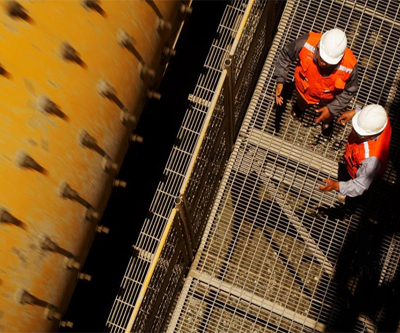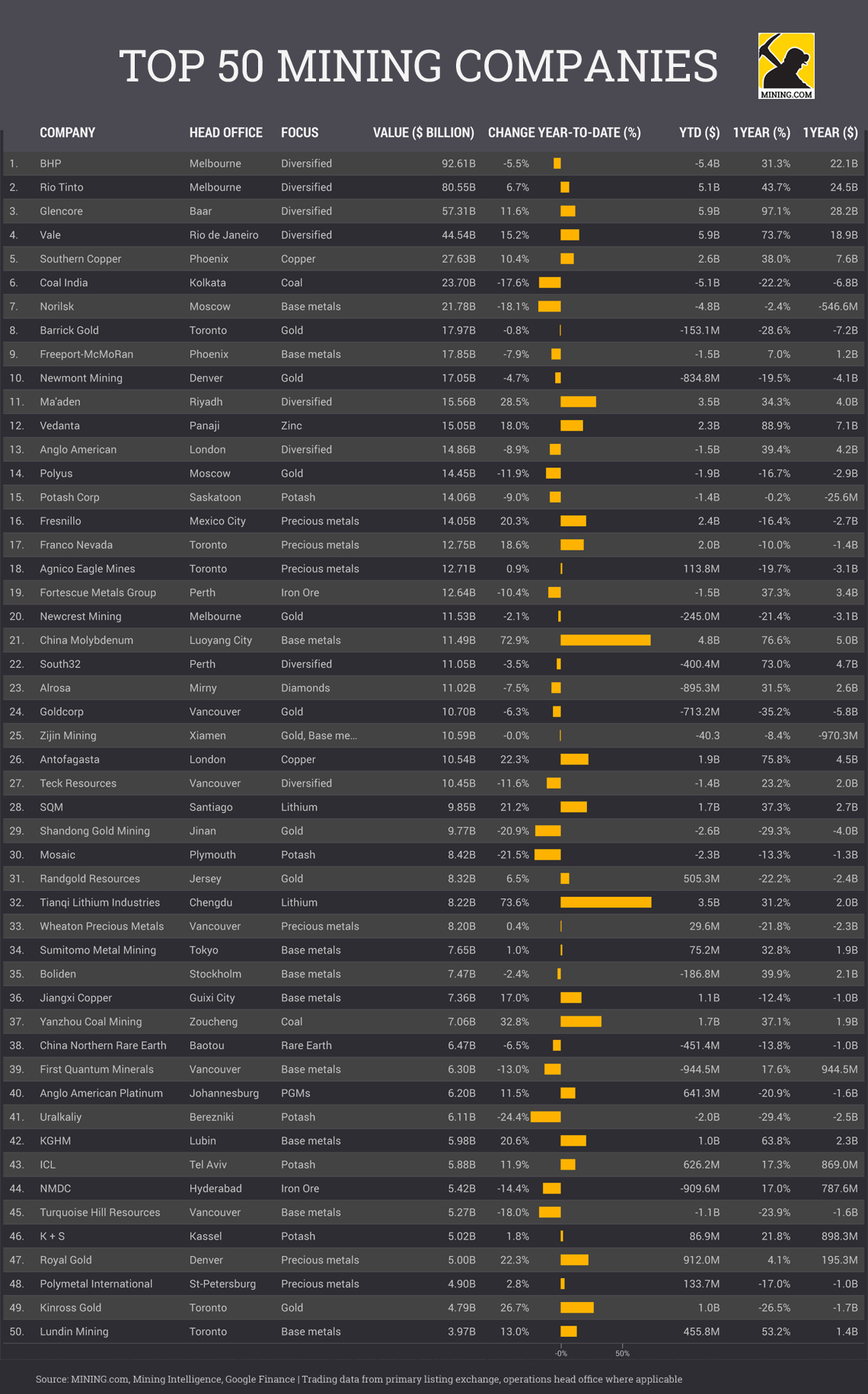
Tintaya concentrator Peru. Source: Glencore
After a banner 2016, the recovery in the mining sector slowed dramatically this year and in some instances fortunes reversed.
At the half-year mark, the world’s 50 largest listed firms are worth a collective $768 billion, adding nearly $12 billion in market capitalization to year-to-end June. The top 10 make up more than half the sector’s worth.
The vast majority of those gains were achieved last year – over the past 12 months the top 50 have added nearly $100 billion in combined value.
A handful of gold companies are in the red so far this year, notably China’s Shandong Gold, Canada’s Goldcorp and Russia’s Polyus Gold, the world’s eighth largest gold miner. Some of last year’s high flyers have also come back down to earth including Australia’s Fortescue Metals Group which have been declining alongside the iron ore price and Canada’s Teck Resources, hurt by a coking coal price that’s fallen back to earth.
Perth-based Iluka Resources is also in contention after jumping 20% in market value this year at $2.8 billion which would make it the sole mineral sands miner in the top 50
Russian firms are not having a happy 2017 with the top five companies losing $9.5 billion year-to-date as falling nickel prices hurt Norilsk’s prospects and potash prices languishing near multi-year lows crimp Uralkali’s outlook. In fact US-based Mosaic and Uralkali have fallen most in percentage terms in H1 2017 and Canada’s Potash Corp (to be known as Nutrien following merger with Agrium) just escaped double digit declines.
In contrast to middling performances from North American and Europe-based companies, three of the seven Chinese firms in the ranking are 2017’s top gainers. Tianqi Lithium continues to ride the battery raw material wave with a near 75% jump in value. China Molybdenum is also on a roll as is Yanzhou Coal with both companies making the most of their jump in value to go on the acquisition path outside their home base.
There has been a few notable changes in the ranking with India’s Vedanta making the most of the continued rally in zinc prices to overtake diversified giant Anglo American to take 12th spot. Saudi Arabia’s Ma’aden also continues to climb the ranking and is now knocking on the door of the top 10. After joining the top 50 last year Tanqui Lithium continued its ascent this year and now ranks as the 32nd most valuable mining company, catching up to another lithium darling Chile’s SQM.
Companies that could join or rejoin the ranking include Canada’s Cameco, the world’s number one public uranium miner which sits at no 51 with a market value of $3.7 billion, London-listed KAZ Minerals ($3.1 billion), Peru’s Buenaventura ($3 billion) and Ivanhoe Mines, a platinum and copper explorer which is up in nearly fourfold in value over the past year and now worth $2.4 billion. Australia’s Iluka Resources is also in contention after jumping 20% in market capitalization this year at $2.8 billion which would make it the sole mineral sands miner (with a bit of iron ore on the side) in the top 50.

Share data last reading on July 3 2017.
2 Comments
Howard Spiegel
Please advise where the $value comes from. The market capitalization is very different than these numbers.
BSN
What about Shenhua? Largest coal miner in the world – market cap >$60bn today, so should be 3rd in your list.